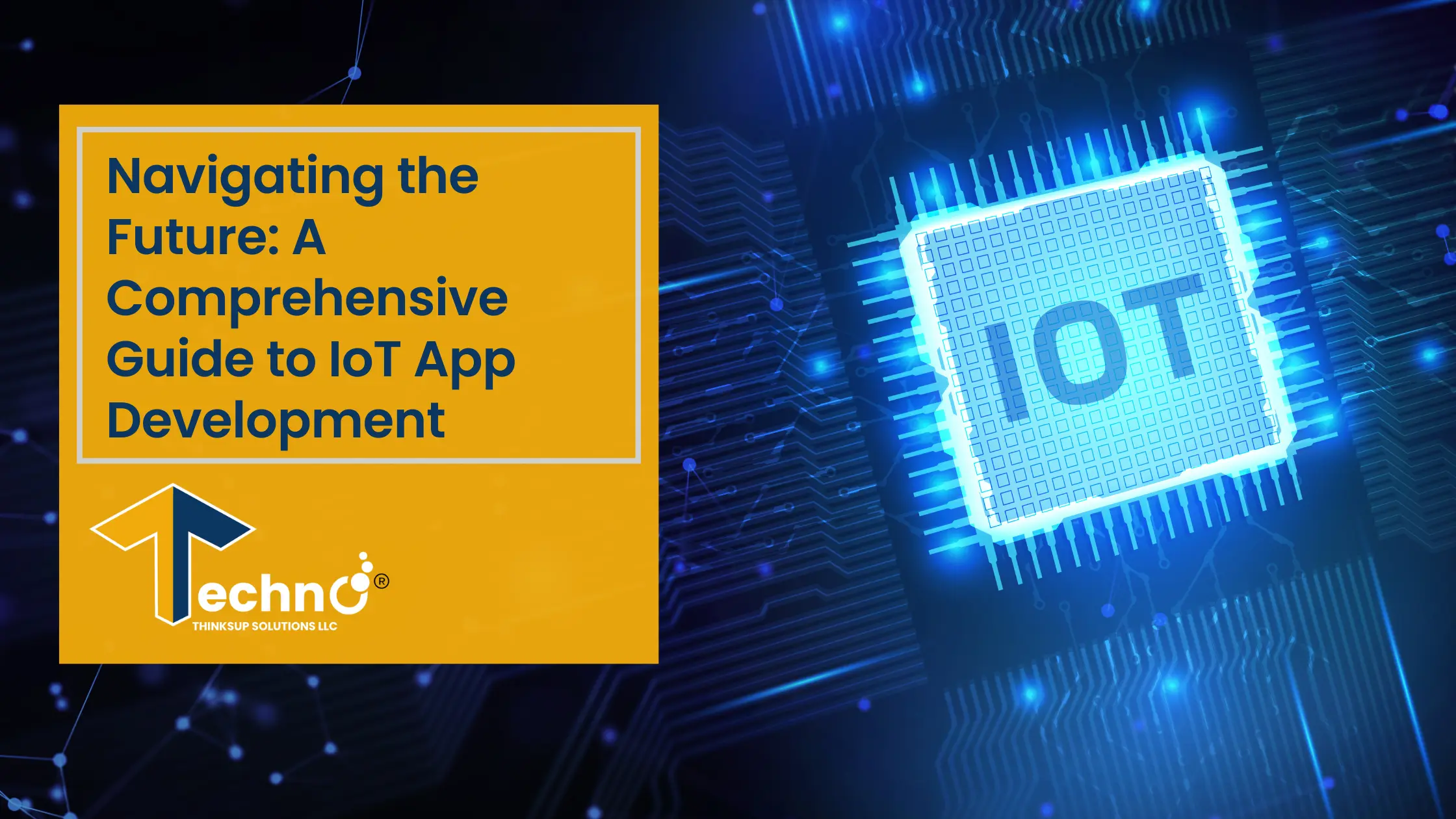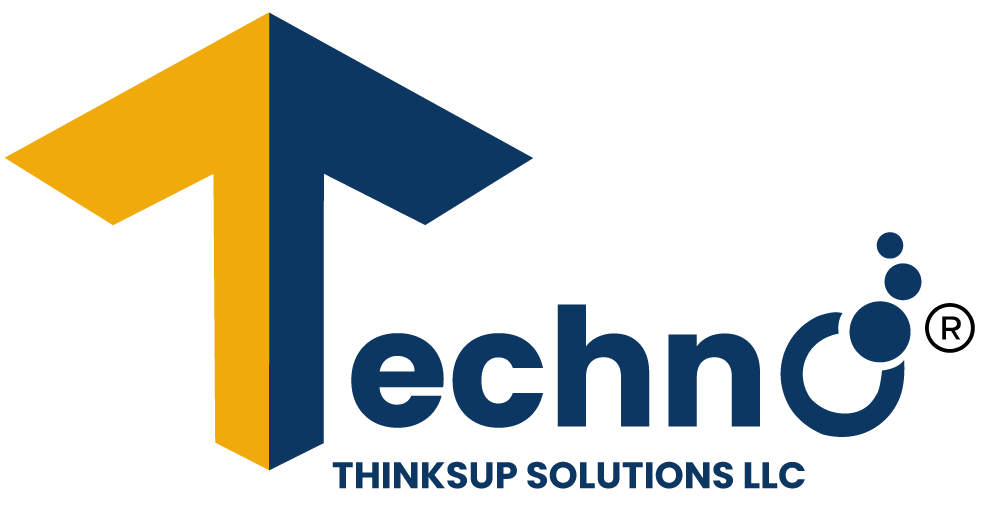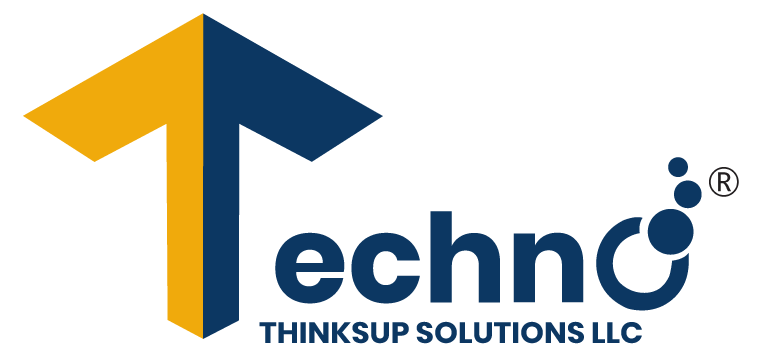Navigating the Future: A Comprehensive Guide to IoT App Development
TechnothinksupRewamp June 7, 2024

In today’s rapidly evolving technological landscape, the Internet of Things (IoT) stands out as one of the most transformative innovations. From smart homes to industrial automation, IoT applications have permeated various aspects of our lives, promising enhanced efficiency, convenience, and connectivity. As businesses and individuals increasingly embrace IoT solutions, the demand for IoT app development continues to soar.
At Technothinksup, we recognize the immense potential of IoT and are committed to helping our clients harness its power through innovative app development. In this comprehensive guide, we delve into the intricacies of IoT app development, exploring key concepts, challenges, and best practices to empower businesses in navigating the IoT landscape.
Understanding IoT App Development
Before delving into the development process, it’s crucial to understand the fundamentals of IoT. At its core, IoT revolves around connecting physical devices and enabling them to communicate and exchange data over the internet. These devices, equipped with sensors and actuators, can range from smartphones and wearables to industrial machinery and environmental sensors.
IoT app development involves creating software applications that facilitate communication with these interconnected devices, collect and analyze data, and enable users to control and monitor various aspects remotely. Whether it’s managing smart home devices, optimizing industrial processes, or enhancing healthcare services, IoT apps play a pivotal role in driving efficiency and innovation across diverse domains.
The IoT App Development Process
Developing robust and user-friendly IoT applications requires a systematic approach that encompasses several key stages:
- Conceptualization: Define the project scope, objectives, and target audience. Conduct market research to identify existing solutions and potential gaps.
- Hardware Selection: Choose appropriate hardware components and sensors based on the application requirements. Consider factors such as connectivity options, power consumption, and scalability.
- Prototyping: Build a prototype to validate the concept and test hardware compatibility and functionality. Prototyping helps identify and address design flaws and performance issues early in the development cycle.
- Software Development: Develop the application backend, including data management, communication protocols, and integration with third-party services. Design intuitive user interfaces (UI) for seamless interaction with the IoT devices.
- Testing and Quality Assurance: Conduct rigorous testing to ensure the reliability, security, and scalability of the application. Perform compatibility testing across different devices and platforms to guarantee a consistent user experience.
- Deployment and Maintenance: Deploy the application on the desired platform (web, mobile, or desktop) and monitor its performance post-launch. Implement regular updates and patches to address security vulnerabilities and improve functionality based on user feedback.
Overcoming Challenges in IoT App Development
While IoT offers unprecedented opportunities, developing IoT applications comes with its own set of challenges:
- Security Concerns: IoT devices are susceptible to security breaches, making data privacy and device authentication critical considerations in app development.
- Interoperability: Ensuring compatibility and seamless communication between diverse IoT devices and platforms can be complex, requiring standardized protocols and APIs.
- Scalability: As the number of connected devices grows, scalability becomes paramount to accommodate increased data traffic and user demands.
- Data Management: Handling large volumes of sensor data efficiently and implementing robust data analytics capabilities are essential for deriving meaningful insights.
Best Practices for IoT App Development
To overcome these challenges and maximize the potential of IoT applications, adhere to the following best practices:
- Prioritize Security: Implement end-to-end encryption, secure authentication mechanisms, and regular security audits to safeguard data and devices from cyber threats.
- Focus on User Experience: Design intuitive interfaces and personalized experiences to enhance user engagement and adoption.
- Embrace Standardization: Follow industry standards and protocols to ensure interoperability and seamless integration with existing IoT ecosystems.
- Optimize Performance: Employ efficient data processing algorithms and leverage cloud computing for scalable and real-time data analytics.
- Stay Agile: Adopt agile development methodologies to iteratively refine the application based on user feedback and evolving requirements.
Conclusion
As IoT continues to reshape industries and redefine the way we interact with technology, the demand for innovative IoT applications is poised to escalate. By following a structured development approach, addressing key challenges, and embracing best practices, businesses can capitalize on the transformative potential of IoT to drive growth, efficiency, and innovation.
At Technothinksup, we are committed to empowering businesses with cutting-edge IoT solutions that propel them into the future of connectivity and automation. Contact us today to embark on your IoT journey and unlock new possibilities in the digital era.

On this important day, we join the global movement to raise awareness about food security and the need for sustainable solutions. 🌍💡 At Technothinksup, we’re committed to leveraging technology to create a world where everyone has access to safe, nutritious, and sufficient food. 🌱🥗
In an age of rapid innovation, technology holds the potential to revolutionize how we grow, distribute, and consume food. From smart farming 🌾🚜 to reducing food waste 🍎♻️, together, we can create a future free of hunger and full of possibilities. Let’s work towards a sustainable and equitable food system for all! 💚🌿
Join us in celebrating this World Food Day by making conscious choices that support a healthier planet and people. 🌎💚
#WorldFoodDay #ZeroHunger #SustainableFuture #TechForGood #FoodSecurity #EndHunger #SmartFarming #Technothinksup #InnovateForChange #HealthForAll

✨🌍Today, we celebrate the adventurous spirit of Christopher Columbus and his quest to discover new worlds! 🌊🗺️ Just as he set sail into the unknown, at Technothinksup Solutions LLC, we’re on a continuous journey of exploration and innovation in the tech world! 🚀💡
From groundbreaking digital solutions 💻 to transforming businesses 🌐, we are committed to helping you navigate the evolving landscape of technology with confidence and success! 💼🌟
Let’s embrace the explorer in all of us and continue discovering new possibilities and solutions together! 💫🔍
🌟 Here’s to charting new territories, embracing change, and building the future! 🌟
#ColumbusDay #TechExplorers #DiscoverTheFuture #InnovationAdventure #DigitalTransformation #TechJourney #NavigatingSuccess #Technothinksup #ExploringNewHorizons #FutureOfTech

🧠💚 Happy World Mental Health Day!
🌍✨ Today, we shine a light on the importance of mental health and well-being. Let’s break the stigma, support one another, and promote mental wellness for everyone. Remember, it’s okay to ask for help and to take time for yourself! 💪💙
What’s your go-to strategy for mental wellness? Share your tips in the comments! 💬🌈
#WorldMentalHealthDay #MentalHealthMatters #BreakTheStigma #Wellness #SelfCare #Technothinksup

🌍✨ Happy World Post Day!
📬✉️ Today, we celebrate the incredible role postal services play in connecting people and businesses around the globe! 🌐❤️ From sending heartfelt letters to delivering essential packages, the post is a lifeline for communication and commerce.
Let’s give a huge shoutout to all the dedicated postal workers who ensure that our messages reach their destinations safely and on time! 🙌💼✊
How do you use postal services in your daily life? Share your thoughts in the comments! 💌🤔
#WorldPostDay #PostalService #ConnectingPeople #MailMagic #PostalWorkers #GlobalCommunication #Technothinksup #CelebratePost

🌐💻 Have you ever wondered what devices people use to access websites? 📱 From smartphones to tablets, laptops to desktops, each device plays a unique role in shaping our online experience!
In today’s digital age, mobile devices are leading the charge, allowing us to browse, shop, and connect on-the-go. 📲 Meanwhile, laptops and desktops remain popular for work, gaming, and more in-depth tasks. 🖥️✨
Understanding these trends can help businesses optimize their websites for various platforms and enhance user experience. 📈💡
What’s your go-to device for browsing the web? Share your thoughts in the comments! 👇💬
#WebAccess #DigitalDevices #UserExperience #TechTrends #Technothinksup

Are you deciding whether to invest in a mobile app or a website for your business? Here's what you need to know:
📱 Mobile Apps offer:
*A personalized, mobile-optimized experience
*Offline access and push notifications
*Higher user engagement but require more time and development costs
💻 Websites offer:
*Universal access through any browser
*Lower upfront costs and easier updates
*Great for SEO, reaching a broader audience
Each option has its strengths! Let Technothinksup Solutions LLC help you choose the best fit for your business strategy.
#AppVsWebsite #BusinessDecisions #DigitalStrategy #TechSolutions #Technothinksup

🚀 Want to take your product to the next level?
Effective user testing is key! Follow these 5 essential steps to ensure you're on the right track:
Define clear goals, choose the right participants, create realistic scenarios, observe without interfering, and always repeat testing. 🎯
These steps will help you gather valuable insights, refine your design, and deliver a seamless user experience every time. 💡
Start today and see the difference smart testing can make! 🙌
#UserTesting #UXDesign #CustomerExperience #ProductDevelopment #Technothinksup
Did You Know? 💡
Your website’s speed plays a crucial role in shaping the user experience! 🚀 A slow-loading site can frustrate visitors and increase bounce rates, but a fast one keeps them engaged and satisfied.
💻⚡ Keep your audience happy by optimizing your website’s performance!
✨ Connect with us today for more insights and let’s boost your website’s speed!
#WebDesign #WebsiteSpeed #UserExperience #SEO #DigitalMarketing #WebOptimization #FastLoading #Engagement #BounceRate #ConnectWithUs #technology #Technothinksup #dubai #facebookviral #instagram #instagramgrowth #websitedesign #websitespeed #DidYouKnow

Boost Your Local Presence with Technothinksup's Local Search Optimization! 📍🔍
📈 Local Rankings: Get found by customers in your area.
🗺️ Google My Business: Optimize your profile for maximum visibility.
🌐 Local SEO: Target keywords specific to your region.
⭐ Reviews Management: Build trust with positive customer reviews.
🔗 Local Link Building: Increase authority with locally relevant backlinks.
Our Approach:
🧠 Strategy: Customized plans to dominate local search results.
🔧 On-Page SEO: Optimize your site for local search terms.
📊 Tracking: Monitor performance and adjust strategies for continued success.
Let’s put your business on the local map! 🚀
#LocalSEO #Technothinksup #GoogleMyBusiness #SEO #LocalBusiness

Streamline Your Workflow with Technothinksup's DevOps Solutions! 🔄🚀
⚙️ Continuous Integration: Automate code integration for faster development.
📦 Continuous Deployment: Deliver updates seamlessly with automated deployments.
🔧 Infrastructure as Code: Manage infrastructure efficiently with code-based solutions.
📊 Monitoring & Logging: Keep your systems running smoothly with real-time insights.
💼 Collaboration: Enhance teamwork between development and operations for better outcomes.
Our Approach:
🧠 Strategy: Tailored DevOps plans to fit your unique needs.
🔄 Automation: Implement tools and processes to speed up development cycles.
🔒 Security: Integrate security practices at every stage of the pipeline.
Let's make your development process faster and more efficient! 🚀
#DevOps #Technothinksup #ContinuousIntegration #Automation #CloudComputing




 Web Development
Web Development
 App Development
App Development
 IT Consulation
IT Consulation
 UI/UX Design
UI/UX Design
 Ecommerce
Ecommerce
 Content Marketing
Content Marketing
 DevOps Services
DevOps Services
 Software Development
Software Development
 Digital Marketing
Digital Marketing
 Social Media Marketing
Social Media Marketing
 Search Engine Optimization
Search Engine Optimization
 AWS Managed Services
AWS Managed Services
 QA And Software Testing
QA And Software Testing
 Local Search Optimization
Local Search Optimization
 Technology Outsourcing
Technology Outsourcing
 Metaverse Development
Metaverse Development
 Web 3 Consulting
Web 3 Consulting
 IoT App Development
IoT App Development
 VR App Development
VR App Development
 IT Staff Augmentation
IT Staff Augmentation
 Startup App Development
Startup App Development
 Saas App Development
Saas App Development
 Low Code Development
Low Code Development
 Product Engineering
Services
Product Engineering
Services
 Custom CRM Development
Custom CRM Development
 Offshore Development
Center (ODC)
Offshore Development
Center (ODC)
 Machine Learning
Development
Machine Learning
Development
 Blockchain App Development
Blockchain App Development
 Blockchain In Identity Management
Blockchain In Identity Management
 Artificial Intelligence
Development
Artificial Intelligence
Development
 Dedicated Development Team
Dedicated Development Team
 Strategic Mobile
Consulting
Strategic Mobile
Consulting
 Scrum
Scrum
 DevOps
DevOps
 Lean
Lean
 Kanban
Kanban
 V-Model
V-Model
 Waterfall Model
Waterfall Model
 Design Thinking
Design Thinking
 Agile Development
Agile Development
 Prototype Methodology
Prototype Methodology
 Rapid Application Development (RAD)
Rapid Application Development (RAD)
 Feature-Driven
Development (FDD)
Feature-Driven
Development (FDD)
 Dynamic Systems
Development Method (DSDM)
Dynamic Systems
Development Method (DSDM)

